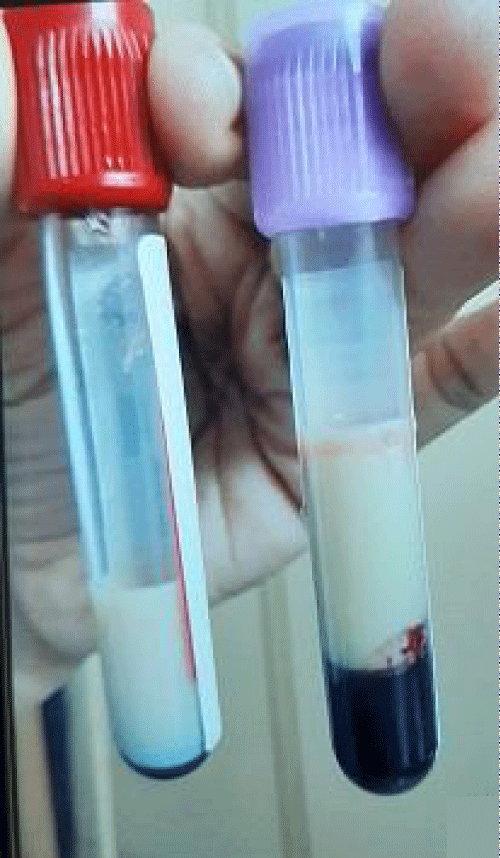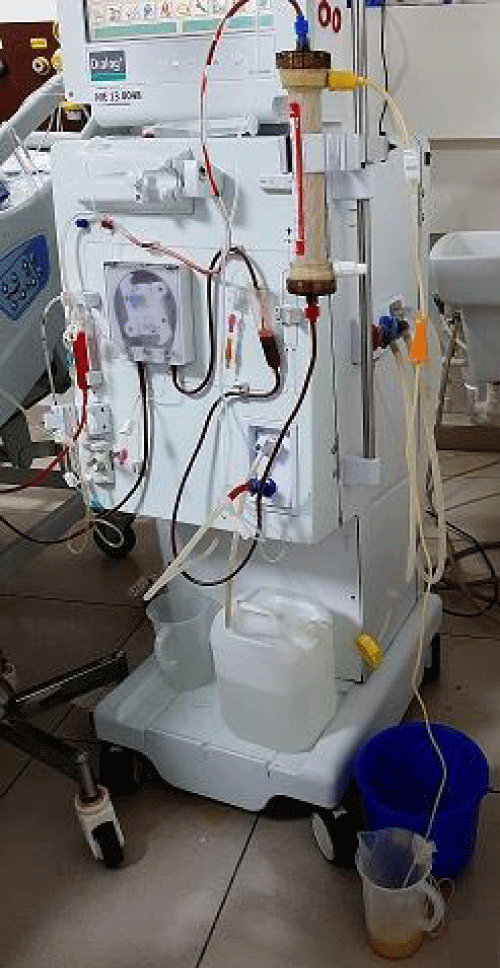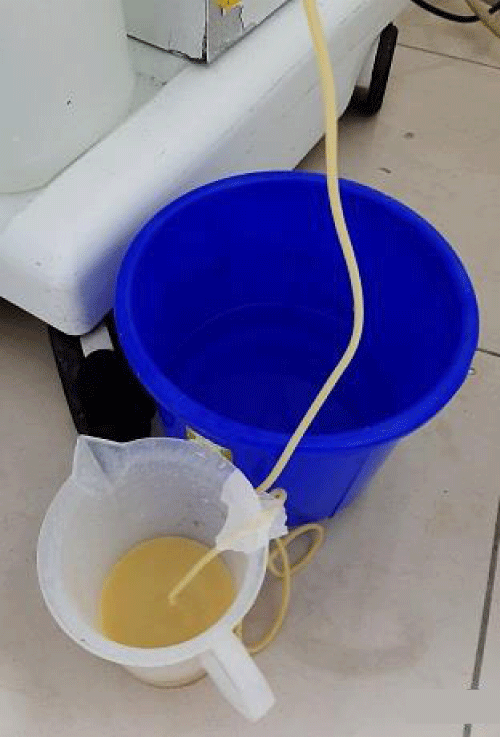More Information
Submitted: February 09, 2021 | Approved: February 11, 2021 | Published: February 12, 2021
How to cite this article: Muralidhara K, Dhareshwar S. Severe hypertriglycerdemia in pregnancy. Clin J Obstet Gynecol. 2021; 4: 019-019.
DOI: 10.29328/journal.cjog.1001080
Copyright License: © 2021 Muralidhara K, et al. This is an open access article distributed under the Creative Commons Attribution License, which permits unrestricted use, distribution, and reproduction in any medium, provided the original work is properly cited.
Severe hypertriglycerdemia in pregnancy
Krithika Muralidhara* and Shashank Dhareshwar
Department of Nephrology, St Johns Medical College Hospital, Bangalore, India
*Address for Correspondence: Krithika Muralidhara, Assistant Professor, Department of Nephrology, St Johns Medical College Hospital, Bangalore, India, Email: [email protected]
31 year old female presented with abdominal pain and respiratory distress in the third trimester of her second pregnancy. Her blood workup revealed a lipemic sample (Figure 1) due to markedly elevated serum triglycerides of 8178 mg/dl (Glycerol Phosphate Oxidase method). Total cholesterol and Low Density Lipoprotein were elevated at 1701 mg/dl and 788 mg/dl respectively. There was no family history of lipid disorders. Diagnosis was consistent with gestational hypertriglyceridemia with acute pancreatitis (Serum Amylase-50 U/L, Serum Lipase- 96 U/L), though genetic tests to rule out pre-existing primary hypertriglyceridemia was not feasible. In view of the life threatening condition, she was initiated on Insulin-Dextrose infusion and offered one session of Plasma Exchange. Figures 2,3 depict membrane plasma separation with the obtained effluent as lipemic plasma. Her serum triglycerides showed a declining trend and was discharged in good health (serum triglycerides at discharge-651 mg/dl).
Figure 1: Lipemic blood sample during routine workup.
Figure 2: Membrane Plasma Exchange showing lipemic plasma in plasma filter.
Figure 3: Lipemic plasma collected as effluent after plasma exchange.


